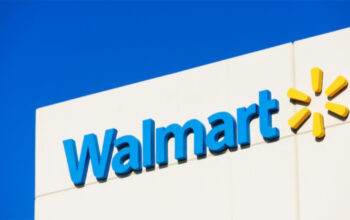This blog will delve into an overview of Blockchain: a groundbreaking technology that has emerged following the internet, is characterised by unique features. It is a decentralised digital ledger that securely stores transactional records, known as blocks, across multiple databases connected through peer-to-peer nodes. This technology, which combines complex mathematical algorithms for securing data (asymmetrical cryptography) and a network structure that distributes the processing and storage of data across multiple nodes (distributed architecture), establishes a secure data exchange and transactions environment.
With many advantages, blockchain technology is pivotal in promoting accountability and honesty in various industries. Blockchain’s first significant advantage is the superior transparency it offers by allowing public access to the transaction ledger. In traditional centralised systems, data is often held by a single authority, leading to concerns about data manipulation and lack of transparency. In contrast, blockchain’s distributed nature ensures that all participants in the network have access to the same information[1], reducing the possibility of data tampering. This transparency makes it possible especially for the stakeholders in the following segments, such as product management and tracking, where each sourced product can be tracked separately.
Secondly, Blockchain ensures enhanced security as each transaction is encrypted and linked to the initial transaction, making it secure and resistant to hacks. Traditional databases are susceptible to cyberattacks and data breaches, which can severely affect businesses and individuals. In contrast, blockchain employs cryptographic techniques to protect data, making it exceptionally difficult for malicious actors to alter or manipulate records. Furthermore, consensus mechanisms in blockchain networks ensure that all participants agree on the validity of transactions before they are added to the ledger, adding a layer of security.
Additionally, blockchain improves efficiency by eliminating intermediaries and enabling faster peer-to-peer transactions, particularly in cross-border scenarios and property management systems. In traditional financial systems, cross-border transactions often involve multiple intermediaries, leading to delays, high fees, and potential points of failure. Blockchain’s decentralised nature allows for direct transactions between parties, minimising the need for intermediaries and streamlining the process. For instance, international remittances can be executed more quickly and cost-effectively using blockchain technology, benefiting both senders and recipients.
Blockchain technology also enhances traceability, verifies traded assets, and prevents fraud. For instance, counterfeiting is a significant issue in the luxury goods market under the mine’s brand value and consumer trust. Blockchain’s ability to record every transaction in an immutable ledger makes it possible to track the provenance of goods from the manufacturer to the end consumer. By scanning a unique identifier such as a QR code, consumers access information about the product’s journey, ensuring its authenticity and origin.
Automation and autonomy are key features of blockchain, as smart contracts allow for automatic settlement without central decision-making. Smart contracts are self-executing contracts that write the terms of the agreement into code directly at the time of execution. For instance, in the insurance industry, a smart contract could automatically process a claim when predefined conditions, such as the submission of required documents and the verification of the claim, are met. This expedites the claims settlement process and enhances customer satisfaction.
Lastly, blockchain technology significantly improves client accountability by recording and monitoring all activities, fostering trust within the blockchain community. In traditional financial systems, customers may have limited visibility into how financial institutions use their funds. Blockchain’s transparency lets users monitor their transactions and account balances in real-time. This transparency enhances trust between users and the network and promotes responsible financial practices among service providers, thereby enhancing customer trust.
There are different types of blockchain networks, each with unique characteristics and use cases. Public blockchains, such as Bitcoin and Ethereum, allow all members to access, store, and modify the database using their computing power. They are fully decentralised and open to anyone, making them suitable for applications that require censorship resistance and global participation. However, due to their open nature, public blockchains also face challenges related to scalability and privacy.
Consortium blockchains are partially decentralised, where only users with rights can access the data based on predefined rules. Consortium blockchains are often used in industry-specific applications where organisations collaborate to share information securely. For example, a consortium blockchain could be used by banks to share customer information while maintaining strict access controls to ensure data privacy.
Private blockchains provide exclusive access to users who can modify the database, offering benefits such as encrypted audit trails. Private blockchains are suitable for enterprises that require a high level of privacy and control over their data. For instance, a company may use a private blockchain for internal supply chain management, ensuring that sensitive business information is inaccessible to unauthorised parties.
Hybrid blockchains merge features of public and private blockchains, enabling organisations to establish permission-based systems while still allowing some level of public access and verification. They offer flexibility and can be tailored to specific use cases. For example, a hybrid blockchain could be used in the healthcare sector to store medical records securely, with patients having control over their data. In contrast, healthcare providers maintain access for treatment purposes.
Summarising, blockchain technology revolutionises businesses by offering accuracy, transparency, and security. It has the potential to manage the complexity of the global market, empower users, and upgrade the global data infrastructure. However, it is crucial to thoroughly understand the technical limitations of blockchain and ensure its proper implementation based on specific use cases. While blockchain can enhance trust and security, data integrity relies on user actions and is susceptible to human errors. Institutions can effectively address the challenges of the digital age by harnessing the power of blockchain technology and its potential applications. As blockchain continues to evolve, it will likely play an increasingly considerable role in shaping the future of industries, driving innovation, and transforming how we interact with digital assets and information. By staying informed about the latest advances and embracing blockchain’s transformative potential, businesses can position themselves for success in the digital age.
References:
[1] https://www.tkd-coop.com/tac




2 thoughts on “An Overview of Blockchain”
Comments are closed.